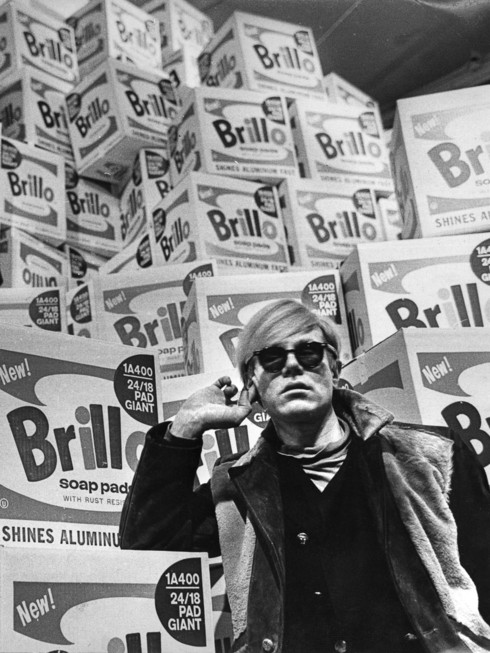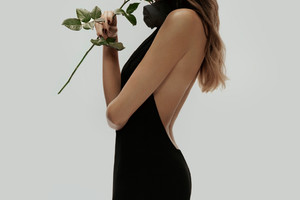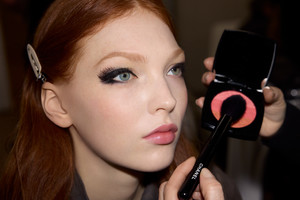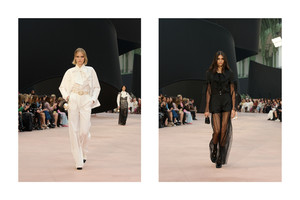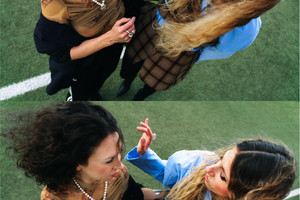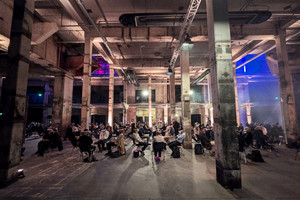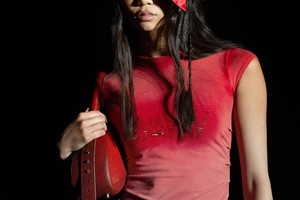Warhol 1968
Written by Fashion TalesWarhol 1968 is an exhibition about the Andy Warhol exhibition at Moderna Museet in 1968. It also explores the complexity of Warhol’s practice from the perspective of the life-changing murder attempt, which took place that year. The exhibition includes the now-famous cow wallpaper that covered the facade of the Museum in 1968, wall photos from the exhibition, quotes and reviews, juxtaposing them with works from the Moderna Museet Collection.
1968 was a politically turbulent year in Sweden and internationally, with reactions against the Vietnam war, the assassination of Martin Luther King, the Soviet invasion of Czechoslovakia, student demonstrations and the tennis riots in Båstad. This was also the year when Andy Warhol’s very first solo museum exhibition opened at Moderna Museet in Stockholm. Due to the left-wing climate that prevailed in Sweden, especially in the arts, the organisers anticipated an onslaught of criticism against the exhibition for being American propaganda. However, the opinions of Sweden’s art critics differed widely. Aftonbladet’s art critic Bengt Olvång wrote that “we can’t deny Warhol his position as an intense, disillusioned truth-seeker”, while Ulf Linde at Dagens Nyheter exclaimed, “Warhol has filled me with distaste.”
“'There is nothing behind the surface of my works,' Warhol said in 1967. But that is not entirely true. Even if his art grew more commercially speculative after the shooting in 1968, he continued to hold up a more or less critical mirror to the face of American mass media and consumerism, albeit of a different nature,” says John Peter Nilsson, curator. Warhol became part of the contemporary popular and mass media culture he had previously described. In the 1970s, he was New York’s most glamorous celebrity and epitomised the nightclub Studio 54. He designed the first advertising campaign for the then Swedish government-owned brand Absolut Vodka. He was commissioned to make portraits of famous people or less famous people who could afford it.
“Warhol was a practising Catholic since childhood, and was aware of how religion was being replaced by mass media and consumerism in the 20th century. He was also obsessed with death and catastrophes. There is a melancholy side to his oeuvre which originates in this,” says John Peter Nilsson,
The exhibition Warhol 1968 looks back at the exhibition of 1968, featuring the now famous cow wallpaper that covered the facade of Moderna Museet, wall photos from the exhibition, quotes and reviews, together with works from the Moderna Museet Collection, including Marilyn Monroe in Black and White (1962), Chelsea Girls (1966), Ten-Foot Flowers (1967), Electric Chair (1967), and several versions of Brillo Boxes, raising questions of original and copy in art.
The exhibition also features the documentary Brillo Box (3 ¢ off) (2016), by Lisanne Skyler and produced by HBO Documentary Film. The film, which was shortlisted for an Oscar, tells the incredible story of the Brillo Box that was bought for one thousand dollars, and sold for three million dollars just over 40 years later. A series of discussions will take place on three evenings, 5 and 19 October and 23 November, with philosophical, aesthetic and religious perspective on Andy Warhol and the politically turbulent year of 1968.
The exhibition will be presented at Moderna Museet Malmö 23 March-8 September 2019.
Picture 1) Interiörbild från utställningen Andy Warhol på Moderna Museet 1968 Foto: Lasse Olsson/DN/SCANPIX
Picture 2) Andy Warhol, Marilyn Monroe in Black and White (Twenty-Five Marilyns), 1962 © 2018 Andy Warhol Foundation for the Visual Arts/ARS, New York/Bildupphovsrätt
Picture 3) Andy Warhol , Ten-Foot Flowers, 1967 © 2018 Andy Warhol Foundation for the Visual Arts/ARS, New York/Bildupphovsrätt

